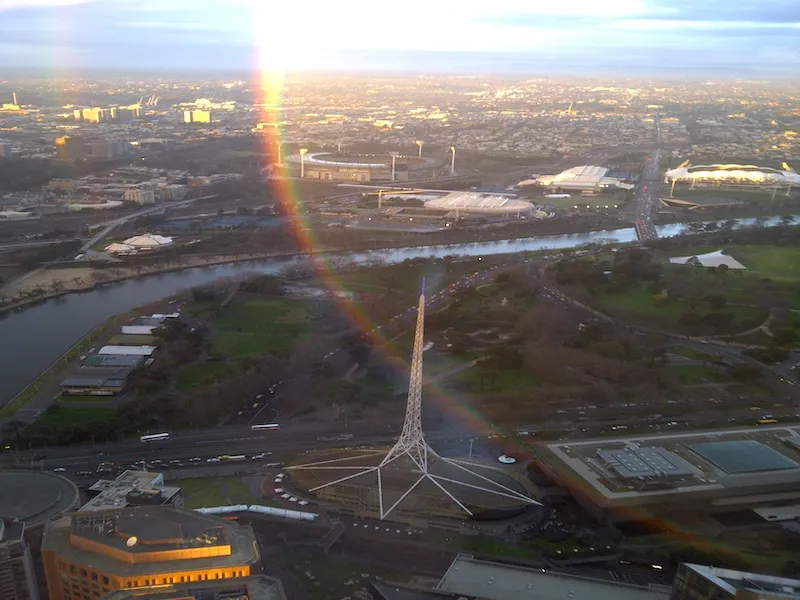Circular rainbows

When we think of a rainbow, we probably think of a colourful arch … possibly with a pot of gold at the end. But you may be surprised to learn that a rainbow is not an arch. Rainbows are actually circles.
Rainbow background
We see rainbow colours when light travels through water droplets that bend the light. When light bends, it separates into its wavelengths which we see as different colours.
Normally we see rainbows as semi-circles. This is because we can only see the light reflected by water droplets above the horizon. As we are different heights, when we look at a rainbow we see slightly different versions of it.
To see a rainbow, the sun must be behind us, shining onto the water droplets ahead of us. The position of the sun also changes how much of the rainbow we can see.
Circle business
Every rainbow is a circle. The sun is directly opposite the centre of this circle, called the anti-solar point. You can think of this like a seesaw: the anti-solar point and the rainbow is on one end and the sun is on the other.
When the sun is low on the horizon (seesaw end down), the anti-solar point is higher in the sky (seesaw end up). This enables us to see more of the rainbow and we see a larger arc.
But when the sun is higher in the sky, the anti-solar point drops lower towards the horizon (imagine the weight on the seesaw has changed ends). Eventually the rainbow will drop below the horizon so we cannot see it at all. (Have you ever seen a rainbow at midday? No!)
To see a full circle of a rainbow, you need elevation, such as in an aircraft, skydiving, or in a very tall building.

Date Posted:
February 10, 2021
